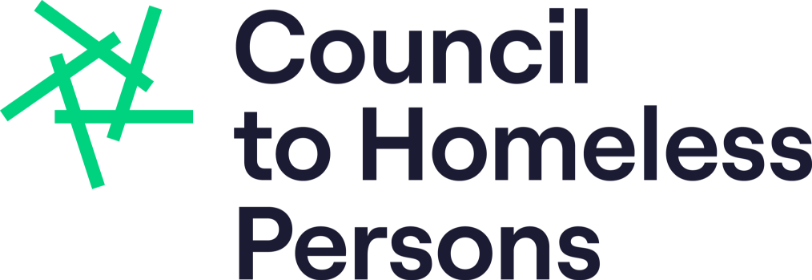World Homeless Day 2020: The story of homelessness in Victoria, Australia
10.10.20
Today, CHP marks World Homeless Day with a snapshot of homelessness in Victoria, Australia, and the story of our state in 2020. This year, like the rest of the global community, Victoria has been significantly impacted by COVID-19 as the state has seen some of the world’s strictest lockdown conditions in efforts to combat community transmission. This has created enormous challenges for people without a home, and spurred new effort by the Victorian Government to fund access to safe accommodation.
A snapshot of Victorian homelessness
The number of people without a home in Victoria has been rising for decades, and now more than 24,817 people are without a home.
On any given night in Victoria, there are approximately 1,100 people sleeping rough and 1,500 people in crisis accommodation. Every year, Victorian homelessness services support more than 100,000 people, yet limited housing options contribute to an average of 105 requests for assistance going unmet each day.
Rental affordability is a challenge
But homelessness figures only tell half of the story. Housing is becoming more unaffordable in Victoria and an increasing number of people are living in housing stress (where lower-income households spend more than 30 per cent of their income on housing costs).
The housing crisis and financial difficulties are some of the top-cited reasons for people seeking homelessness support services. A recent rental affordability snapshot showed that Melbourne’s inner metro area has the eighth highest unmet housing need in the whole country.
Victoria and COVID-19
In March 2020, when COVID-19 cases began appearing throughout Australia, Victoria – like other states – entered lockdown. This resulted in a dramatic increase in unemployment. To help people manage financially, the Federal Government increased income support payments for many people who lost their jobs, and the Victorian Government banned rental evictions and provided a rent supplement for struggling renters.
But many people who lost work, like temporary residents, weren’t eligible for income support. Others lost their rentals in the weeks that elapsed between the first wave of job losses and increased income support, or because the evictions moratorium didn’t start until many weeks after the onset of mass unemployment.
Even as COVID-19 cases decreased in other states allowing them to reopen, a second wave of cases in Victoria bought about a new, extended period of lockdown – as a result, over 400,000 Victorians are receiving JobSeeker payments and approximately one million Victorians are on the JobKeeper scheme.
These payments have provided critical financial support, but from late September, the Federal Government cut $300 a fortnight from JobSeeker and reduced JobSeeker. These cuts will trigger a new wave of homelessness over coming months.
The impact on housing affordability
As households were financially impacted by COVID, many sought to make savings by “trading down” to a cheaper rental, adding to competition at the cheaper end of the rental market – and squeezing out the lowest income and most vulnerable households.
A recent rental affordability snapshot from Anglicare painted a bleak picture of the number of affordable homes available for people on income support such as JobSeeker, Disability Support Pension, Age Pension, Youth Allowance, and minimum wage – with almost zero suitable and affordable rentals available across the whole of Australia.
Percentage of rental listings in Australia that are affordable for a single person on:
| March 2020 | Now | After 31 December 2020 | |
|---|---|---|---|
| Jobseeker | 1.3% | 1.0% | 0.0% |
| Minimum wage | 2.1% | 1.7% | 1.7% |
| Disability Support Pension | 0.4% | 0.3% | 0.2% |
| Age Pension | 0.9% | 0.8% | 0.8% |
| Youth Allowance | 0.7% | 0.8% | 0.0% |
As COVID rates and lockdown conditions affected metropolitan Melbourne and regional Victoria differently, we also began to see trends of people moving out of the city throughout 2020. This has increased rents in rural and regional Victoria, deepening affordability issues and unmet housing need in these locations.
Social housing as a solution
With Australia in recession, there are growing calls from the homelessness sector, from economists, business leaders, and politicians, to position social housing as an instrument in our economic recovery. Social housing investment is also supported by 77 per cent of Victorians.
The Victorian Housing Peaks Alliance, formed of community services organisations across Victoria, released a Make Social Housing Work framework to address the backlog of social housing infrastructure across the state. Meanwhile, a coalition of national housing and homelessness peak bodies proposed a Social Housing Acceleration and Renovation Program (SHARP) calling for a $7.7 billion investment for new social housing and renovation to existing homes.
Social housing is positioned not only as a way to provide much-needed housing for Victorians at risk of homelessness, but also as a tool to stimulate the economy. Building 30,000 homes over four years, as suggested in SHARP proposals, would create 18,000 jobs each year across Australia and increase GDP by anywhere between $5.8 to $6.7 billion.
What’s next?
The Federal budget released this week did not respond to calls for investment into social housing, nor for raising levels of income support. It also included a $41.3 million cut to Australian homelessness services from July 2021.
Council to Homeless Persons has called the Budget a missed opportunity to speed up the economic recovery of our state and to protect communities across Victoria from homelessness. As the impacts of COVID and recession unfold, we will continue to advocate for people without a home, and campaign for the government to invest in the social housing urgently needed to respond to growing homelessness.
If you want to keep up to date with developments in Victoria, we encourage you to subscribe to the fortnightly CHP eNews bulletin for the latest news.

